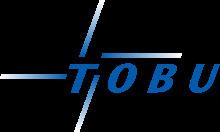Native name 東武鉄道株式会社 Traded as TYO: 9001 Subsidiaries Tobu Top Tours | Type kabushiki kaisha Founded November 1897 | |
 | ||
Founder Michinari SuenobuRokuro Hara Area served Tokyo, Saitama, Chiba, Gunma, Tochigi Stock price 9001 (TYO) JP¥ 564 -5.00 (-0.88%)31 Mar, 3:00 PM GMT+9 - Disclaimer | ||
Tobu Railway Co., Ltd. (東武鉄道株式会社, Tōbu Tetsudō Kabushiki-gaisha) is a Japanese commuter railway company in the Greater Tokyo Area as well as an intercity and regional operator in the Kantō region. Excluding the Japan Railways Group companies, Tobu's 463.3 km rail system is the second longest in Japan after Kintetsu. It serves large portions of Saitama Prefecture, Gunma Prefecture and Tochigi Prefecture, as well as northern Tokyo and western Chiba Prefecture.
Contents
- tobu nikko line tobu kinugawa line tobu railway
- History
- Railway network
- Rolling stock
- Express EMUs
- Commuter EMUs
- Steam locomotive
- DMUs
- Steam locomotives
- References
The Tobu corporate group is also engaged in road transportation (bus/taxi), real estate, and retail. It is the largest investor in the Tokyo Skytree, the tallest structure in Japan. The company is a member of the Mizuho keiretsu.
The name "Tobu" is formed from the kanji for east (東) and Musashi (武蔵), the initial area served.
tobu nikko line tobu kinugawa line tobu railway
History
Tobu is one of the oldest railway companies in Japan. It was established in November 1897 and began operation between Kita-Senju and Kuki in August 1899. The Tojo Railway was founded in 1911 as a separate company, but shared its president and head office with Tobu.
Tobu was the first railway in the Kanto region to adopt quadruple tracks, on the Kita-Senju to Takenotsuka sector in 1974. The Tobu Dobutsu Koen (Tobu Animal Park) opened in 1981.
Railway network
Tobu has two isolated networks which are connected by the Chichibu Railway for ferrying of its rolling stock.
The Tobu Main Line network has a tree topology starting at Asakusa Station in Tokyo, with the Isesaki line as the trunk, and the Tobu Kameido Line, Daishi Line, Tobu Urban Park Line, Tobu Sano Line, Koizumi Line, Tōbu Kiryū Line, and Nikkō Line forming the branches, with further branches into the Tobu Utsunomiya Line and Tobu Kinugawa Lines. It offers surcharged, seat-reserved limited express services from Tokyo to Nikkō and Kinugawa.
The Tojo Line runs northwest from Ikebukuro Station in Tokyo to central and western Saitama Prefecture. A branch, the Ogose Line, runs to Ogose from Sakado Station.
Tobu's terminals in Tokyo are at Asakusa Station (Main Line express services), Oshiage Station (most other Main Line services) and Ikebukuro Station (Tojo Line). The Skytree and Isesaki Lines interoperate with the Tokyo Metro Hibiya Line to serve central Tokyo, while the Tojo Line interoperates with the Tokyo Metro Fukutoshin Line, Tokyu Toyoko Line and Minatomirai Line to serve central and southwest Tokyo and Kanagawa Prefecture.
Rolling stock
As of 1 April 2016, Tobu Railway operates a fleet of 1,890 electric multiple unit (EMU) vehicles, the third largest fleet for a private railway operator in Japan after Tokyo Metro (2,728 vehicles) and Kintetsu (1,905).
Express EMUs
Eight new three-car 500 series EMU trains are scheduled to be introduced on limited express services on lines from Asakusa from 21 April 2017.
Commuter EMUs
Steam locomotive
Tobu plans to operate steam-hauled tourist services on the Kinugawa Line from 10 August 2017 using JNR Class C11 steam locomotive C11 207 loaned from JR Hokkaido together with JNR Class DE10 diesel locomotive DE10 1099 purchased from JR East, a fleet of six 12 and 14 series coaches purchased from JR Shikoku, and two Yo 8000 brake vans purchased from JR Freight and JR East.
